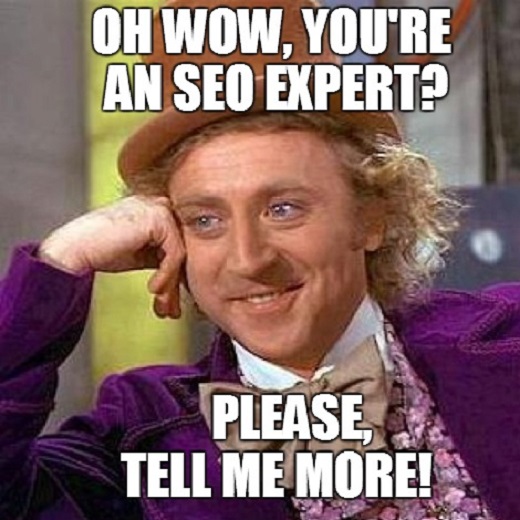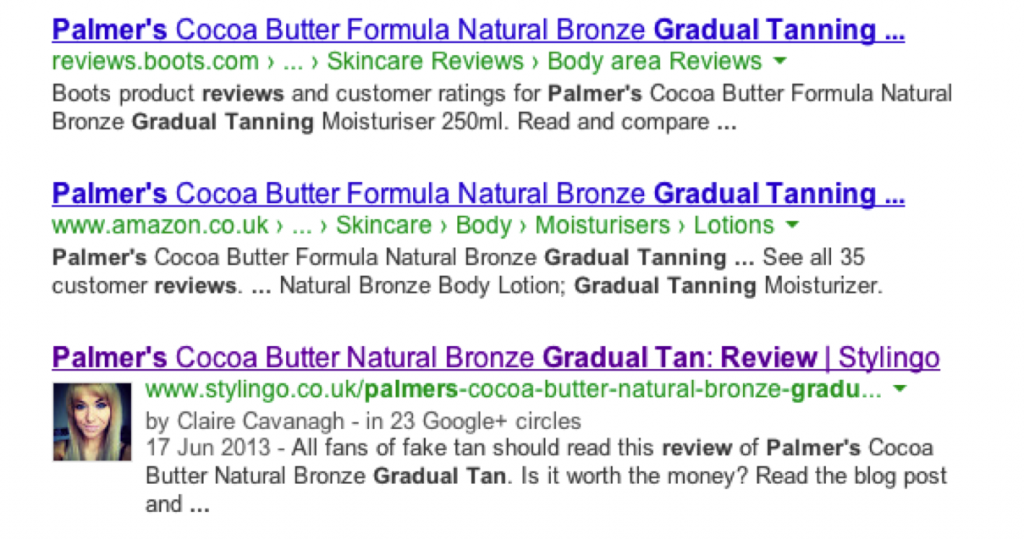 Hehe. Me and Claire aren’t really SEO experts (we save that title for the lunatics we work with that seem to think SEO is a fulfilling hobby), but we do know a thing or two about the murky world of search (why not go and have a nosey at our SEO tips for bloggers post for the cold hard proof, homegirls).
Hehe. Me and Claire aren’t really SEO experts (we save that title for the lunatics we work with that seem to think SEO is a fulfilling hobby), but we do know a thing or two about the murky world of search (why not go and have a nosey at our SEO tips for bloggers post for the cold hard proof, homegirls).
So, we’ve decided to put together a little bloggers guide to some of the questions we see pop up on Facebook and Twitter about SEO and making sure that your website is tip-top from a search engine point of view. Hopefully, they will help to clear up some of the quezzies us fashion and beauty bloggers have about our blogs.
In our first Bloggers Guide, we’re going to have a look at…
NoFollow vs DoFollow Links
Dofollow and no followlinks have been hot topics in the blogger groups that I’m part of on Facebook, and I’m sure that you might have seen people talking about them on Twitter too. There’s actually quite a big difference between the two. While they would look the same to your average blog visitor, the real difference is how they look to Google (or the search engine of your choice, but who uses Bing really).
HOLD UP…
For those who want a bit of clarification, links are one of the ways that Google uses to decide where to put your blog in the merry old search engine rankings. If a really good website or blog links to your blog, then Google will say to itself ‘GUT GOTT, this blog must be brilliant, I will rank it number one for ‘bad bitch blog’ (erm…that’s kind of how it works). In recent years, Google have put more weight onto good quality links, rather than the quantity of links your blog has. So, if a site like ASOS provide a link to your blog, its likely to give your search engine rankings a boost. If 1000 really wubbish websites give you a link to your blog, your blog might get flagged for being really wubbish too.
On the flip side, the links you give to brands, companies or other websites from your blog will give them a boost too. Google’s Guidelines are very specific on how you should link to other brands or websites, so it’s worth having a read about what it recommended and what is not. But how does all of this apply to ‘dofollow links’ and ‘nofollow links’?
What is a ‘dofollow’ link when its at home?
So, because Google looks at links as a way of determining the quality of a website, their little computer robots will ‘follow’ links to and from a website to decide where to rank your blog. If the links you provide are ‘dofollow’, Google will do just that – they’ll take into account the link you have provided or received.
As a blog owner, you’ll be keen to get high quality dofollow links to your blog because that will help you rank better in the search engine results pages (aka SERPs if you fancy getting techie). It’s also one of the reasons why brands and companies you might work with may sometimes ask for a link in a blog post you write.
How do you know if a link is ‘do follow’?
If you write your blog in WordPress or Blogger and use their content toolbar to add in links, its likely that these will automatically be ‘dofollow’. However, if you want to check, head into the ‘plain text’ viewing option. If your link is dofollow, it will likely look something like this in code:
<a href=”http://www.vanityclaire.co.uk>Stylingo</a>
You can also specify if you want a link to be dofollow, but the standard link HTML above will always be dofollow unless you tell Google otherwise. This is what it would look like if you want to tell Google it’s a do follow:
<a href=”http://www.vanityclaire.co.uk rel=”dofollow”>Stylingo</a>
What are the don’ts of a ‘do follow’?
This is a subject that’s widely debated and it can be a tricky one. The main thing to remember is that do follow links must be editorially given. It’s against Google’s guidelines to accept payment in return for a do follow link. For example, if you have a guest post or sponsored post on your website with a link to the brand and you have labelled that post as ‘Sponsored’, Google will think that your blog is violating its guidelines.
Whether or not you give a brand or website a dofollow link is usually a case of common sense. If a company directly says “I will give you £100 if you do follow link to my really good viagra website’, it’s usually a good idea to say no. But if you love a brand and they send you a product that you would have written about anyway on your blog, then there shouldn’t be any harm in giving that brand a dofollow link.
The key is everything in moderation and Google will quickly pick up if your beauty blog is writing a load of sponsored posts about how to lose 4 stone in 2 days, greyhound betting and trouser snake operations.
What about those pesky ‘nofollow’ links?
As you might have gathered, nofollow links are the exact opposite to do follow links. Instead of following a link like the real life stalker Google is, search engines will – in theory – put less weight onto it.
When should you use a no follow link?
Nofollow links are best used when you don’t particularly want Google to associate your blog with the website you’re linking to. It may be that the website is a bit spammy or downright rude, but a nofollow link will make sure that Google doesn’t connect your blog with that dodgy site.
If you do accept payment for a sponsored post, then the links you provide to the brand or website in question should be no follow. Don’t be surprised if a brand or website isn’t too interested after you tell them that the link will need to be nofollow. While, of course, you will know that its against Google’s guidelines for them to ask you to give them a dofollow in return for payment – it’s unfortunately still relatively common practice with some brands to do so. The best thing to do is say NO THANK YOU SIR, and move on with your life.
If you do decide to accept payment for a dofollow link, you won’t be arrested and killed by Google hitmen. It’s common practice for bloggers to put ‘sponsored post’ or ‘this is a paid for post’ at the end of a post that has been paid for, which is a way of staying in line with advertising standards. It can be surprising then, when brands might ask you to remove those words. The reason why they sometimes ask this is because this will red flag to Google that the link has been paid for. This can have implications for both the brand and your blog too. We’re not saying that this is right, but it is something that does happen and something that is useful to be aware of. It’s up to you as a blogger to decide what is appropriate for you and your blog!
The fact is, do follow links are valuable to brands. While no follow links aren’t useless (we’ll get onto that in a mo), they’re not always what brands are after.
How do you know if a link is ‘nofollow’?
If you want to make a link ‘nofollow’, you will need to switch over to your plain text editor again and use this HTML code around the link:
<a href=”http://www.vanityclaire.co.uk rel=”nofollow”>Stylingo</a>
Are nofollow links any use at all?
You might be thinking, “if dofollow links are so great, why would anyone be bovved about no follow links?”. On the surface, they look a bit like Solange compared to Beyonce (i.e. relatively rubbish). BUT there are actually a lot of benefits to a nofollow.
Firstly, it’s worth remembering the primary purpose of a link – to let people know that you like a website and that you would like them to visit that website too. While they may have little impact on SEO, no follow links can still drive traffic to your blog or the brand you’re linking to (for example, all links you leave in the comments section of other blogs are nofollow, but they will still drive some traffic to your blog).
There have recently been articles too about whether Google take into account nofollow links, and whether they will start doing so in the future. As with most Google updates, it’s usually difficult to predict what they’re going to do too far in the future. However, it’s worth noting that spamming nofollow links can get you into trouble, just as spamming dofollow links would.
Also, a well placed link on a relevant blog post or website can drive traffic to your blog. Increased traffic can help you rank better, and a nofollow link could lead to dofollow links as more people find out about your blog, read your content and generally become fans of your face.

